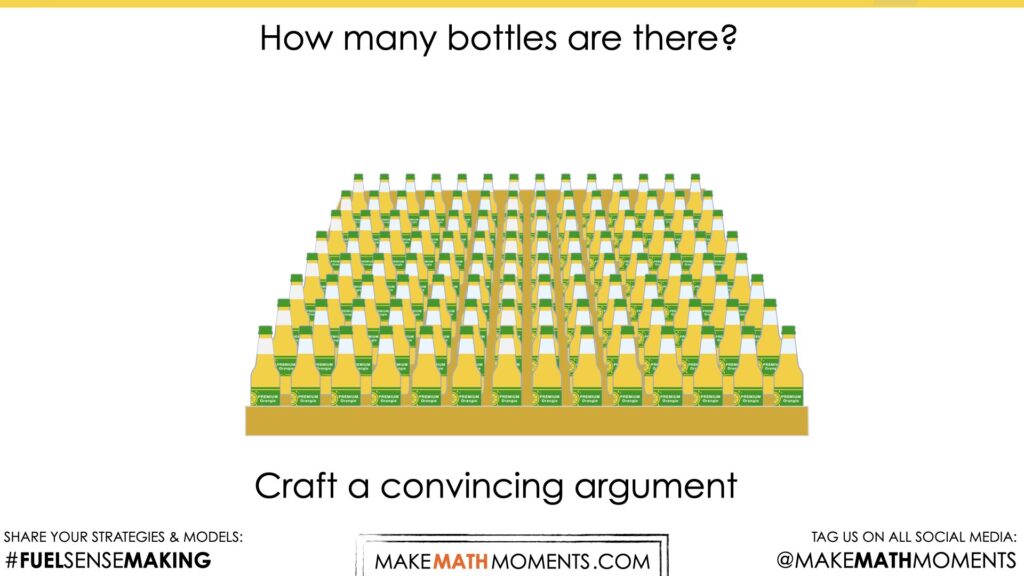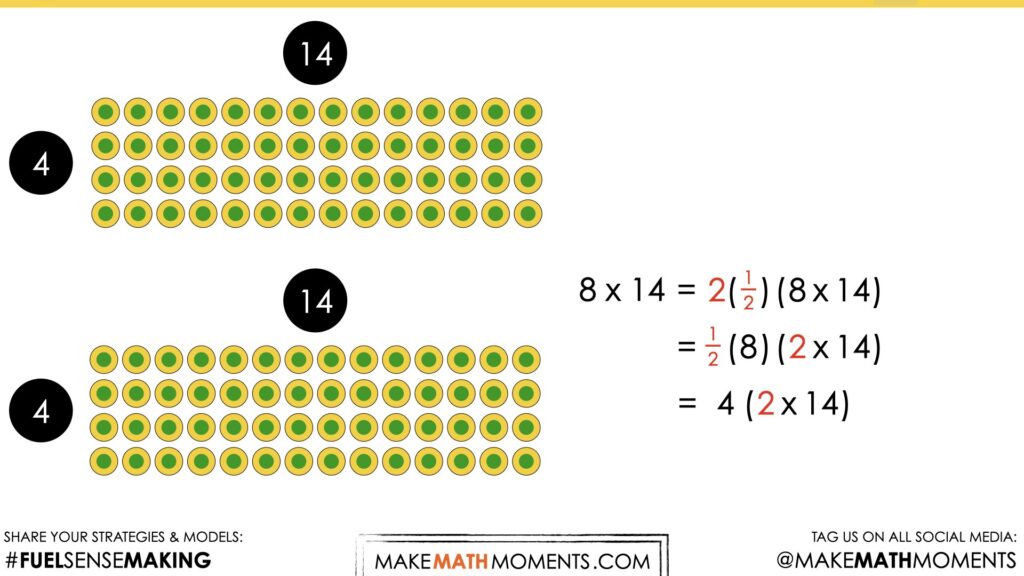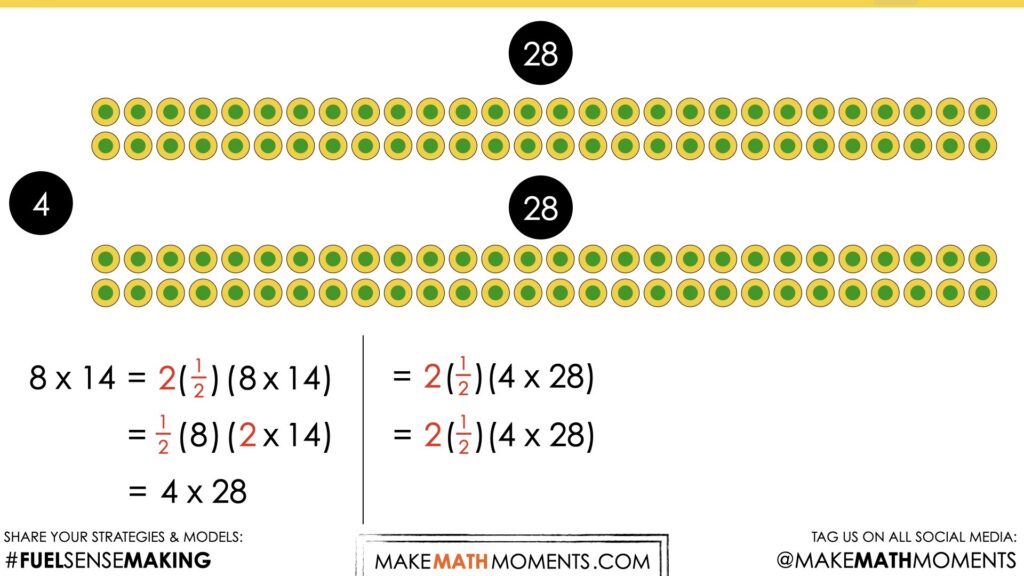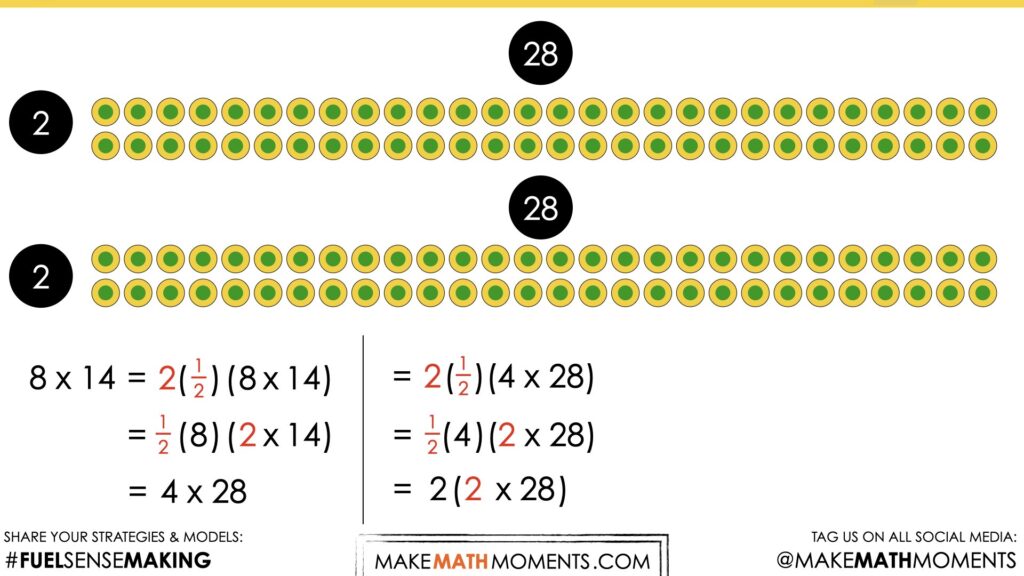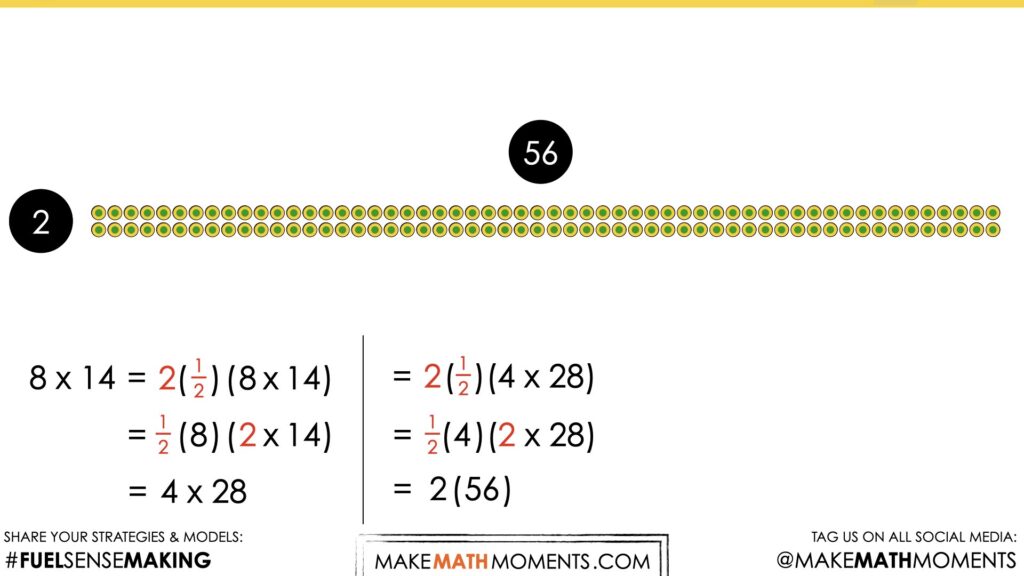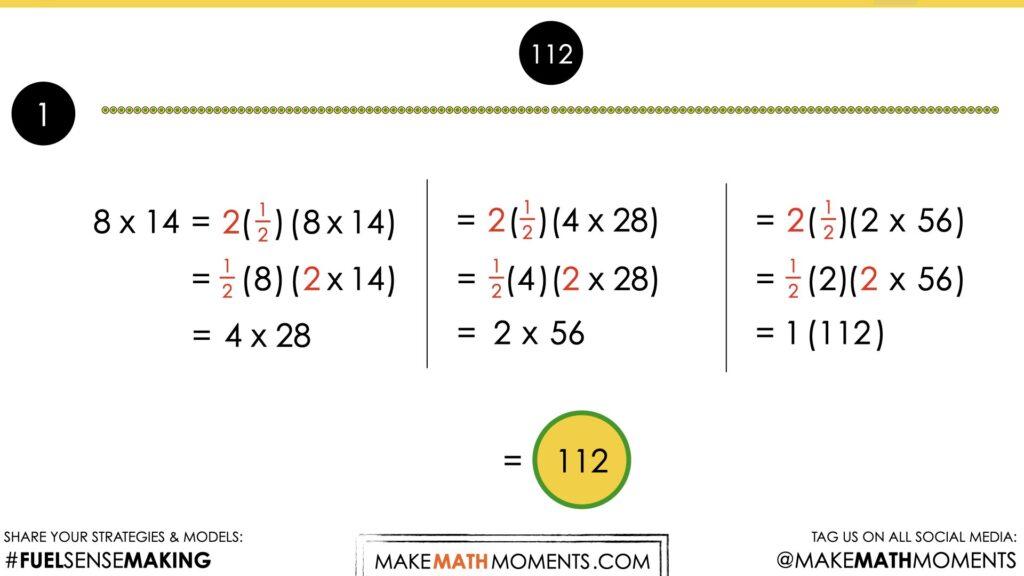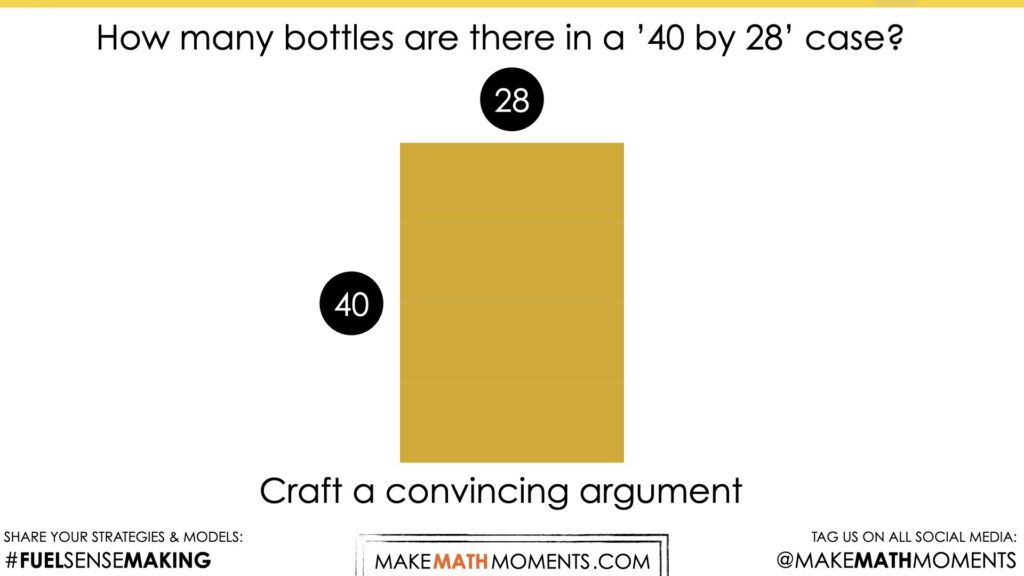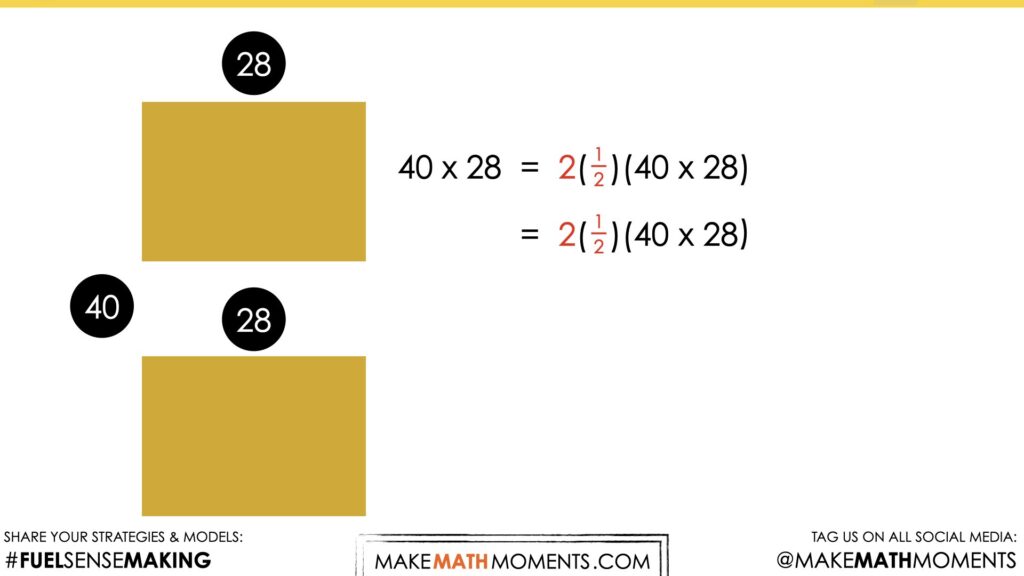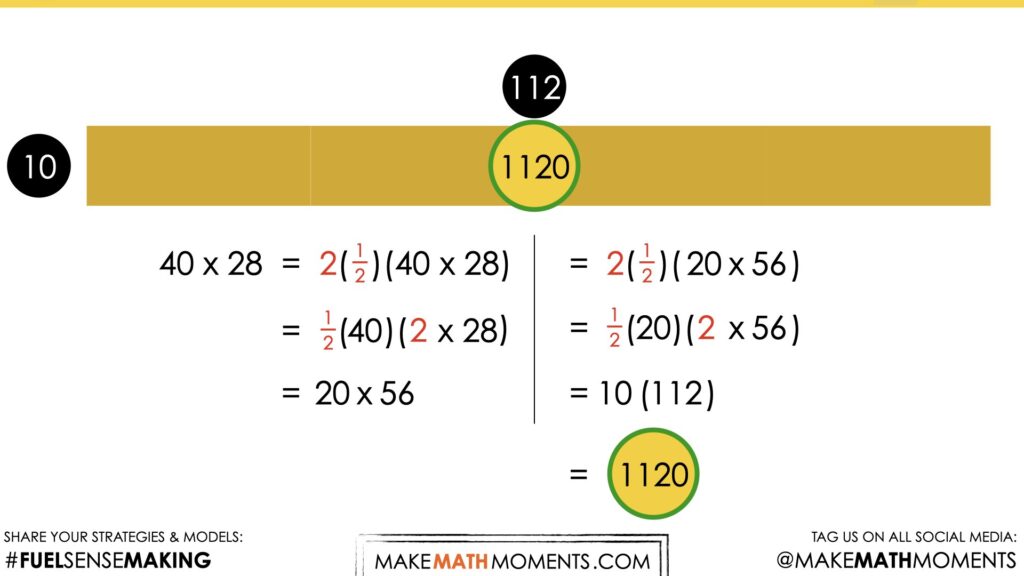STACK 'EM UP [DAY 2]
MULTIPLICATION: 1- & 2-DIGIT WHOLE NUMBERS
Introduction to 1- and 2-digit multiplication through context in order to emerge associative, commutative and distributive properties and models including the array and area model.
Intentionality
Math Talk
Visual Math Talk Prompt #1
Visual Math Talk Prompt #2
Purposeful Practice
Resources & Downloads
Educator Discussion Area
Intentionality & Unit Overview

Length of Unit: 5 Days
Access each lesson from this unit using the navigation links below
Students will explore modelling multiplication and solving multiplication problems using the array model.
Intentionality…
The purpose of the Day 2 activities is to reinforce key concepts from Day 1. Students will engage in a string of related problems through a math talk and will have an opportunity to complete independent purposeful practice. The math talk and purposeful practice serve to develop a deeper understanding of the following big ideas:
- Multiplication can involve determining the total quantity given the number of equal groups and the size of each group;
- The order of the numbers in a multiplication sentence does not matter (commutative property);
- The strategy of doubling and halving is possible due to the associative property of multiplication;
- The distributive property of multiplication supports the strategy of partial products (where one or both factors can be decomposed over addition or over subtraction).
Math Talk
Present the following multiplication sentences one at a time. Encourage students to describe a context that could be represented by each sentence. For example, bottles in shelved cases of orange juice.
These particular factors were selected to emerge doubling and halving as a multiplication strategy.
The first three multiplication sentences of this string are a set, and the last three sentences are a set. For the first set, it would be helpful to model student thinking using an array. Consider using a digital tool where the quantities within the array are concrete and countable. As the numbers increase in the second set, consider shifting to an open array.
8 x 14
4 x 28
2 x 56
1 x 112
40 x 28
20 x 56
10 x 112
1 x 1120
Consider watching this silent solution animation to help you prepare to facilitate this math talk utilizing an array and open array.
Visual Math Talk Prompt #1
Show students the following visual math talk prompt and be prepared to pause the video where indicated:
Then ask students:
How many bottles are there?
Craft a convincing argument without the use of a calculator.
Similar to Day 1 of the Stack ‘Em Up problem based unit, students will be presented with a crate of drink bottles organized in an 8 x 14 multiplication array and will be tasked to determine how many bottles there are in total.
Since we are aiming to build fluency and flexibility multiplying one- and two-digit numbers we are going to ensure students are not leveraging the calculator as a tool.
As the facilitator, we are going to do our best to work from an array or open array (or area model) to highlight the strategies students are using to multiply these two factors.
Some students may choose to employ a doubling and halving strategy such as halving the 8 rows and doubling the 14 columns which employs use of the identity property (i.e.: any quantity multiplied by 1 keeps its identity or remains unchanged) and our understanding of fraction equivalence (i.e.: 1 = 1 whole = 2 halves = 2 one-halves) and the associative property to reassociate one-half with the 8 rows and 2 with the 14 columns.
This use of the associative and commutative properties allows us to see that 8 rows of 14 columns is equivalent to 4 rows of 28 columns.
Of course, these visuals can support your facilitation of this visual number talk, but it would be most effective if the facilitator draws the models both as arrays or area models and represents symbolically as the thinking emerges.
It is important for you to also determine how far symbolically you believe is beneficial for students given their current entry point. The symbolic representation here is more helpful for educators to understand what is actually happening through the use of the identity, commutative and associative properties.
A student who is using a doubling and halving strategy can continue to use this strategy to make one of the factors smaller and smaller and one of the factors larger and larger until they are comfortable determining the product.
A student who continues to utilize this strategy will eventually arrive at a 1 by 112 array which results in a total of 112 bottles.
It should be noted that some students may choose to leverage the distributive property instead by breaking down 8 x 14 into 8(10 + 4) or some other variation that decomposes the factors down into more manageable chunks. This approach should also be modelled with an array and/or area model.
Visual Math Talk Prompt #2
Show students the following visual math talk prompt and be prepared to pause the video where indicated:
Then ask students:
How many bottles are there in a 40 by 28 case?
Craft a convincing argument without the use of a calculator.
Again, facilitating this based on student thinking and modelling on the board for all to see is helpful here rather than simply playing the silent solution animation.
While we will model based on whatever approach students would like to use to solve this problem, we do want to ensure that we highlight the idea of doubling and halving here as a strategy that students may be able to add to their repertoire of strategies for the future.
Students might choose to half either factor and double the other, but an example is modelled here along with the symbolic representation.
Since halving 40 and then 20 feels natural followed by doubling 28 and then 56, students leveraging this strategy will find themselves with 10 rows of 112 bottles which most students may quickly recognize as 1,120 bottles in total.
Again, we do not want to limit students from leveraging other strategies, however we do want them to recognize that certain strategies may be more helpful than others in particular situations.
Purposeful Practice
While Students Are Practicing…
Login/Join to access the entire Teacher Guide, downloadable slide decks and printable handouts for this lesson and all problem based units.
Questions: Multiplication
Question #1:
Login/Join to access the entire Teacher Guide, downloadable slide decks and printable handouts for this lesson and all problem based units.
Question #2:
Login/Join to access the entire Teacher Guide, downloadable slide decks and printable handouts for this lesson and all problem based units.
Question #3:
Login/Join to access the entire Teacher Guide, downloadable slide decks and printable handouts for this lesson and all problem based units.
Question #4:
Login/Join to access the entire Teacher Guide, downloadable slide decks and printable handouts for this lesson and all problem based units.
Question #5:
Login/Join to access the entire Teacher Guide, downloadable slide decks and printable handouts for this lesson and all problem based units.
We suggest collecting this reflection as an additional opportunity to engage in the formative assessment process to inform next steps for individual students as well as how the whole class will proceed.
Resources & Downloads
Login/Join to access the entire Teacher Guide, downloadable slide decks and printable handouts for this lesson and all problem based units.
Printable Lesson Plan PDF
Videos, Images & Media Files
Apple Keynote Presentation
Powerpoint Presentation
Printable Consolidation Prompts
Educator Discussion Area
Login/Join to access the entire Teacher Guide, downloadable slide decks and printable handouts for this lesson and all problem based units.
Explore Our 60+ Problem Based Units
This Make Math Moments Lesson was designed to spark curiosity for a multi-day unit of study with built in purposeful practice, number talks and extensions to elicit and emerge strategies and mathematical models.
Dig into our other units of study and view by concept continuum, grade or topic!


